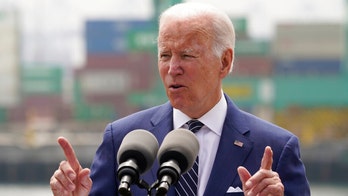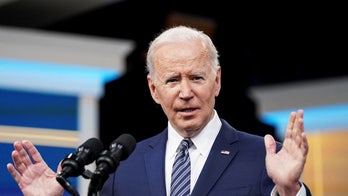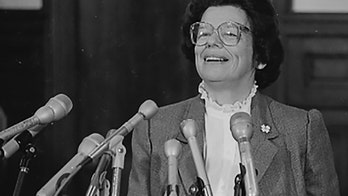This is what Robert Gibbs had to say at the top of the White House briefing
QUESTION: Robert, regarding the photos of detainees in Afghanistan and Iraq, you took several questions on this on April 24th. You said that it was -- that DOJ decided it was hopeless to appeal. The administration entered into an agreement to release the photos.
GIBBS: Right.
QUESTION: You had a question about whether the president was concerned about if the release might do harm to our troops. And you said his decision was consistent with his goal of keeping the nation and the troops safe.
GIBBS: Right.
QUESTION: And you said this is among the many actions that are out of our control. So my question is: What has changed to make you think that you have more control? And what has changed about the concerns about harm to the troops?
GIBBS: Well, Chuck, as I said yesterday, the president was concerned about harm to the troops. I think part of my answer in that briefing also was a question about whether or not this was likely to impact our legislative agenda.
The president, as you all know, met with his legal team last week because he did not feel comfortable with the release of the photos. Primarily believes that -- and I'll go through some of the dates and the (inaudible) that I did yesterday. This all stems from a FOIA -- first, from detainee abuse investigations that were concluded by the end of 2004. There was a FOIA case that started -- the first ruling was in September of 2008. That ruling was appealed, I believe, in December of 2008.
On March 11th, the Second Circuit declined to have the full circuit review the three-judge ruling, appealing the decision that was made. The president does not believe that the strongest case regarding the release of these photos was presented to the court. And that was a case based on his concern -- what the release of this -- these would do to our national security.
He believes that the release of these photos could pose a threat to the men and women we have in harm's way and Iraq and Afghanistan and doesn't believe that we may -- doesn't believe that the government made the strongest case possible to the court and asked the legal team to go make that case.
QUESTION: Well, what changed to -- you're just stating now that he is concerned that it would do harm.
GIBBS: Well, I'm not stating that now. I've -- I believe I've always stated that, and I stated it as well yesterday.
QUESTION: On the 24th, the stated the opposite; that he had come to the conclusion that this would not cause harm to the troops.
GIBBS: I will -- I will go back and -- I looked at part of that a few days ago. I have not seen the full -- but I'll be happy to take a look at it.
QUESTION: The question is, are you concerned that it would cause a backlash against our troops in harm's way? You said that -- that the president has done a lot of back-and-forth in his mind over the course of several weeks about ensuring that this protected those that keep us safe, that it protects our national security. The president came to the determination that the decision that he made with consistent with all those criteria.
GIBBS: Well, the president reflected on -- on this case and believes that they have the potential to pose harm to our troops.
QUESTION: Was he pressured by the military?
GIBBS: No. In fact, this was brought up -- his decision was brought up with General Odierno yesterday at the end of their meeting, the meeting that General Odierno and Ambassador Hill had with the president. The president brought this up at the end of the meeting to inform General Odierno of his decision.
Obviously, there has been concern -- there was certainly concern throughout the process by -- by folks that -- the harm that could be caused by the release.
QUESTION: (OFF-MIKE)
GIBBS: I think they have. But I would also say the president believes a couple of other things. Understand that the existence of these investigations are -- I don't know the exact address, but they're on the DOD Web site. The president believes that the release of these photos will also provide a disincentive for detainee abuse investigation.
The photos don't denote the existence of the investigations. They're simply part of the potential evidence in the cases that have been finished since 2004.
But if in each of these instances somebody looking into detainee abuse takes evidentiary photos in a case that's -- that's eventually concluded, that this could provide a tremendous disincentive to take those photos and investigate that abuse.




